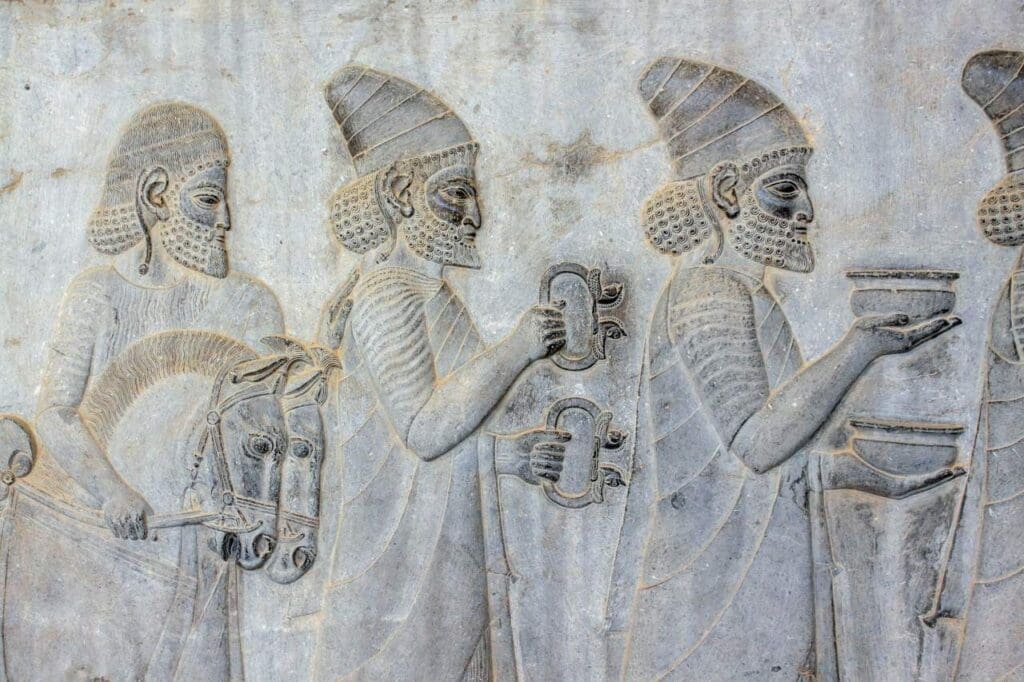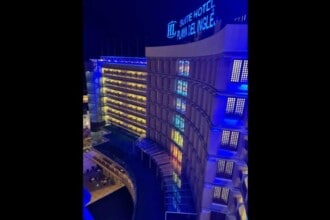The Middle East, a melting pot of history and culture, offers a remarkable array of cultural heritage sites that narrate stories of ancient civilizations and ongoing traditions. Each location presents a unique blend of the past and present, inviting travelers to delve into a world where historical marvels and contemporary life intersect.
From architectural masterpieces that have stood the test of millennia to vibrant living museums that continue to celebrate age-old customs, these destinations are not just places to visit but treasures to experience.
Petra, Jordan
Nestled amidst the rugged desert landscape of Jordan, Petra, known as the ‘Rose City’, is a marvel of ancient engineering and artistic craftsmanship. Carved directly into vibrant rose-red sandstone cliffs more than 2,000 years ago by the Nabataeans, this archaeological treasure was once a thriving trade center and is now a UNESCO World Heritage Site.
The journey to Petra through the Siq, a narrow gorge flanked by towering cliffs, is itself a mesmerizing experience. As you emerge from the Siq, the breathtaking view of the Al-Khazneh or ‘The Treasury’ unfolds – a monument renowned for its stunning façade and intricate design.
Beyond the Treasury, Petra reveals a vast city of tombs, temples, an ancient theater, and sophisticated water channels, all showcasing the ingenuity of its creators. This site is an exploration of an ancient civilization and an invitation to wander through the annals of time.

The Pyramids of Giza, Egypt
In the shadow of modern Cairo, the Pyramids of Giza rise from the Egyptian desert, a testament to human aspiration and timeless wonder. These ancient marvels, constructed over four millennia ago, were the ambitious projects of Egyptian pharaohs seeking to etch their legacies in stone.
The Great Pyramid of Khufu, the largest of the three, stands as a staggering achievement, composed of millions of limestone blocks, each telling a silent story of the hands that shaped them. Flanked by the Pyramids of Khafre and Menkaure, the complex also hosts the enigmatic Sphinx, a guardian of mysteries, blending the pharaoh’s head with the lion’s body.
Wandering among these ancient structures, one is enveloped by the whispers of history, tales of power, life, and the quest for immortality. The Pyramids of Giza are more than monuments; they are narratives in stone, pushing us to ponder the depths of human ingenuity and strive for balance.
AlUla, Saudi Arabia
In the heart of Saudi Arabia, a unique museum stands as a vibrant testament to the enduring legacy of Arabian culture. This immersive living museum extends beyond the conventional museum setup, offering a dynamic interaction with the rich tapestry of Saudi heritage.
Visitors can explore traditional mud-brick architecture, wander through bustling souks, and observe artisans practicing age-old crafts like weaving, pottery, and metalwork. The museum is a lively hub where cultural festivals, music, and dance performances are regularly held, allowing guests to experience the pulsating rhythms and melodies that have echoed through Arabian nights for centuries.
Additionally, culinary explorers can savor traditional dishes, providing a taste of the region’s rich gastronomic heritage. This living museum not only preserves the past but actively celebrates it, offering a unique window into the soul of Saudi Arabian culture and its enduring traditions.

Persepolis, Iran
Established by Darius the Great in the 6th century BCE, this UNESCO World Heritage site in Iran unfolds as a vast complex featuring palaces, temples, and columns. Elaborate bas-reliefs grace the structures, illustrating scenes of royal audiences, processions, and the diverse peoples within the expansive Persian Empire.
The magnificence of the Gate of All Nations, which leads to the Apadana Palace, provides a glimpse into what was once the epicenter of an empire spanning from Greece to India. Visitors can explore the remains of the Tachara Palace, the Hundred-Column Hall, and the royal tombs cut into nearby cliffs, each telling a story of imperial might, architectural innovation, and cultural exchange.
Persepolis is not just a fun spot to take photos; it’s a journey into the history of a civilization that has significantly shaped the world’s cultural and political landscape.
Baalbek, Lebanon
Baalbek, dominated by the massive Temple of Jupiter (which formerly had 54 enormous columns) and the elaborately decorated Temple of Bacchus, provides an insight into the magnificence of the Roman imperial building. This UNESCO World Heritage site, perched on a neighboring hill, is home to the lesser-known Temple of Venus and the Temple of Mercury.
The size and quality of these constructions demonstrate how significant Baalbek was to Roman religion and culture. When exploring this historic city, one is thrust back in time to a period when Baalbek was a significant Roman Empire pilgrimage and cultural hub, where gods and goddesses were worshiped with imposing grandeur.
The Middle East, with its rich tapestry of historical sites, offers a journey through the corridors of time. Each location, from the engineering marvels of ancient civilizations to the dynamic living museums, tells a unique story of human ingenuity, resilience, and cultural richness.
As you chart your travels to these timeless treasures, you’re not merely adding destinations to your itinerary; you’re preparing to immerse yourself in the depth and diversity of human history.


















